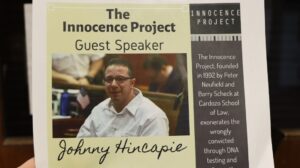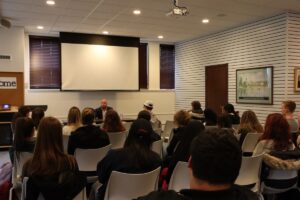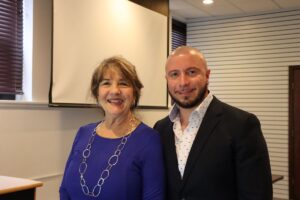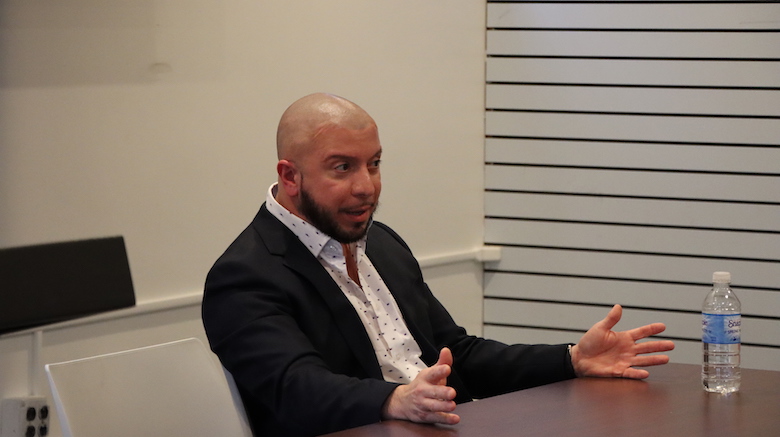In 1990, Johnny Hincapie was arrested and falsely convicted in connection to the murder of a tourist on a Manhattan subway platform. Twenty-five years later, his conviction was overturned, and he was released from prison.
Now, Hincapie has partnered with the Innocence Project to share his story and help bring change to the justice system. Hincapie visited SJC Long Island earlier this month to speak to students during an event sponsored by the criminal justice, psychology and religious studies departments.
“When I was arrested, I was beat up by a detective and coerced into giving a false confession,” he said to the students filling the Shea Conference Room, noting he was 18 at the time of his arrest.
“I was told I could go home if I told the detective exactly what he told me to say. But false confessions did not exist back then, and my presumption of innocence did not exist in prison,” he added.
The Innocence Project works to free the significant number of innocent prisoners, and to bring a change to the legal system that placed them there. Each year, someone partnered with the Innocence Project visits SJC Long Island to share their story of being wrongfully convicted.
“No matter what we evolve to be, no matter what career we aspire to hold, there are going to be negative people that try to persuade us to do the wrong thing,” Hincapie said. “If there had been one good police officer at that police station just to interfere and tell this detective what he was doing to me was wrong, I never would have spent 25 years of my life in prison.”

Hincapie explained that he felt voiceless for so many years while he was in prison. But he earned bachelor’s and master’s degrees while there, which exposed him to theatre classes that helped him find a voice. Since his release, he’s had several acting roles — in commercials and movies.
“Our criminal justice system back then was taught in a way that we needed to prosecute people,” he said. “Innocence wasn’t a big thing back then. So to have this change today is huge, and we need more of it. There are still so many people who need to see this difference.”



